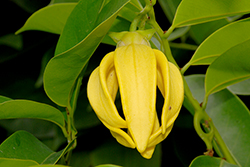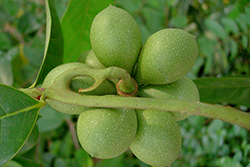e-Flora of Thailand
Volume 16 > Part 1 > Year 2022 > Page 44 > Annonaceae > Artabotrys
5. Artabotrys hexapetalus (L.f.) Bhandariwfo-0000549776
Baileya 12: 149. 1965; H.Huber in Dassan. & Fosberg, Revis. Handb. Fl. Ceylon 5: 51. 1985; Bân, Fl. Vietnam 1: 137. 2000; Chalermglin, Fam. Annon. 62. 2001; Nurainas, Floribunda 2(5): 120. 2004; I.M.Turner, Gard. Bull. Singapore 70: 429. 2018.— Annona hexapetala L.f., Suppl. Pl. 270. 1782.
Accepted Name : This is currently accepted.
Synonyms & Citations :
Description : Climber to 15 m tall, often with thorns. Twigs glabrous, outer layer non-flaking. Leaves membranous, oblong-elliptic or oblong-obovate, 10.7–18.3 by 3–6 cm, base cuneate, apex acuminate, subglabrous on both surfaces, secondary veins 8–10 per side, tertiary venation reticulate; petioles 3–7 mm long. Inflorescences 1–3-flowered, distal branches arising from peduncular hook short, pedicels 15–23 mm long, sparsely appressed-pubescent. Sepals ovate, ca 7 by 6 mm, apex acute, sparsely puberulent to subglabrous on both surfaces. Petals yellow in vivo, subglabrous, blades laminar. Outer petals 35–45 mm long, ca 5 mm wide at base, 12–18 mm wide at midpoint, blades elliptic to obovate, apex acute to obtuse. Inner petals 35–40 mm long, ca 4 mm wide at base, 10–15 mm wide at midpoint, blades elliptic to obovate, apex acute to obtuse. Stamens ca 3 mm long, anther connective apex apiculate. Carpels 20–22, 4–5.5 mm long. Fruit of 8–15 monocarps borne on a glabrous pedicel 18–25 mm long. Monocarps drying black, obovoid, 2.7–3.5 by 2–2.5 cm, smooth, glabrous, apex with a beak ca 2 mm long, base contracted into a stipe 4–5 mm long. Seeds brown, 20–22 by 10–12 mm, rough.
Thailand : NORTHERN: Chiang Mai; NORTH-EASTERN: Udon Thani, Khon Kaen; EASTERN: Nakhon Ratchasima, Buri Ram; SOUTH-WESTERN: Kanchanaburi; CENTRAL: Krung Thep Maha Nakhon (Bangkok); SOUTH-EASTERN: Chon Buri, Chanthaburi; PENINSULAR: Narathiwat.
Distribution : India (type), Sri Lanka.
Ecology : Cultivated as an ornamental plant. Flowering and fruiting all year.
Vernacular : Kradang nga chin (กระดังงาจีน)(Central); karawek (การเวก); saban nga chin (สะบันงาจีน)(Northern); saban nga khruea (สะบันงาเครือ)(Northern).
CommonName : Climbing lang-lang, ylang-ylang vine.
Notes: Artabotrys hexapetalus closely resembles A. harmandii but differs from the latter in having membranous leaves, the monocarp apex with a beak ca 2 mm long, and the monocarp base contracted into a stipe 4–5 mm long (vs coriaceous leaves, monocarp apex rounded (rarely weakly beaked), and monocarp base contracted into a stipe 5–12 mm long). It is commonly cultivated but does not occur in the wild in Thailand.


